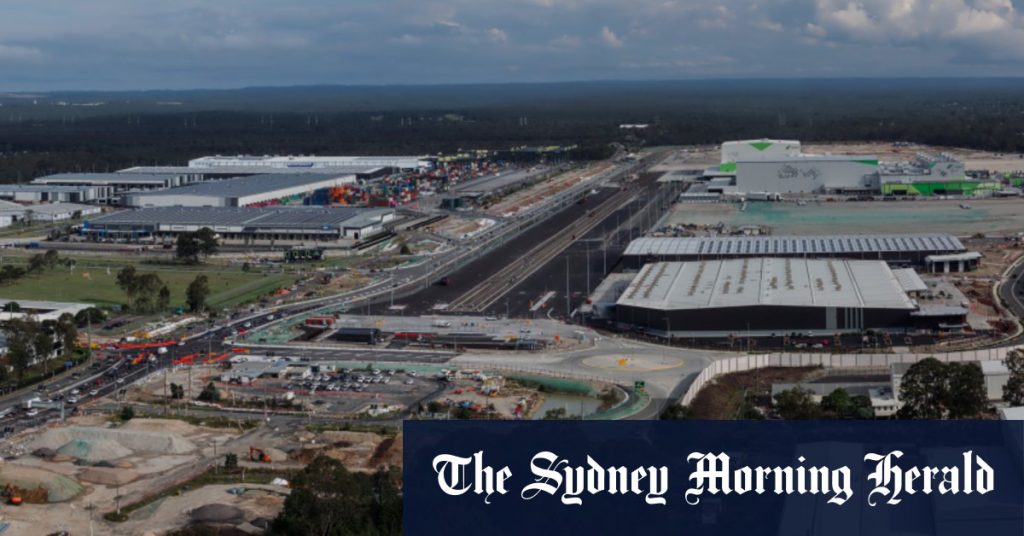The new interstate freight rail terminal at Moorebank in Sydney’s south-west serves as a key entry point for large interstate trains arriving from across the country. Unlike the new airport, the intermodal precinct at Moorebank remains relatively unknown despite its critical role in the transportation of consumer goods to homes and businesses. The hub, covering over 240 hectares, will play a significant role in the city’s day-to-day life and is essential for increasing rail’s share of freight transport, which has declined in recent years.
The massive facility includes an interstate rail hub and an import-export terminal operated by Qube Holdings, serving as a crucial link between Port Botany and Moorebank. The import-export terminal features automated cranes that lift and stack containers, facilitating the movement of goods between ships, trains, and trucks. The precinct, built on former Defence Force land, also boasts the country’s largest rooftop solar project, with plans to generate 100 megawatts of energy to power homes and reduce carbon emissions.
The business case for the intermodal precinct at Moorebank estimates $11 billion in economic benefits over three decades, including reductions in freight costs, traffic congestion, accidents, and carbon emissions. The precinct is expected to have a significant impact on Sydney’s daily life, relieving road transport pressures, supporting businesses, and improving supply chains. By taking 3000 heavy truck movements off Sydney roads each day, the precinct will have a transformative effect on the community and business operations.
Despite the benefits of the Moorebank freight hub, there are challenges in shifting container freight from roads to rail, especially with the construction of new motorways like WestConnex and the Sydney Gateway. The NSW government faces a policy dilemma in promoting rail transport while building infrastructure that facilitates truck movements. The Moorebank hub will connect to the Inland Rail project, which aims to improve rail freight connections between Australia’s major cities.
Cost overruns and delays on the Inland Rail project highlight the challenges in improving Australia’s rail freight system and increasing the proportion of containerised freight moved by rail. Open-access intermodal terminals like Moorebank are crucial in boosting rail freight transportation and relieving pressure on roads. With continued investment and coordination between various levels of government and industry stakeholders, the Moorebank precinct has the potential to significantly improve freight transport and benefit the community and businesses in the long term.













